15 Types of Couches and How to Choose One For Your Home
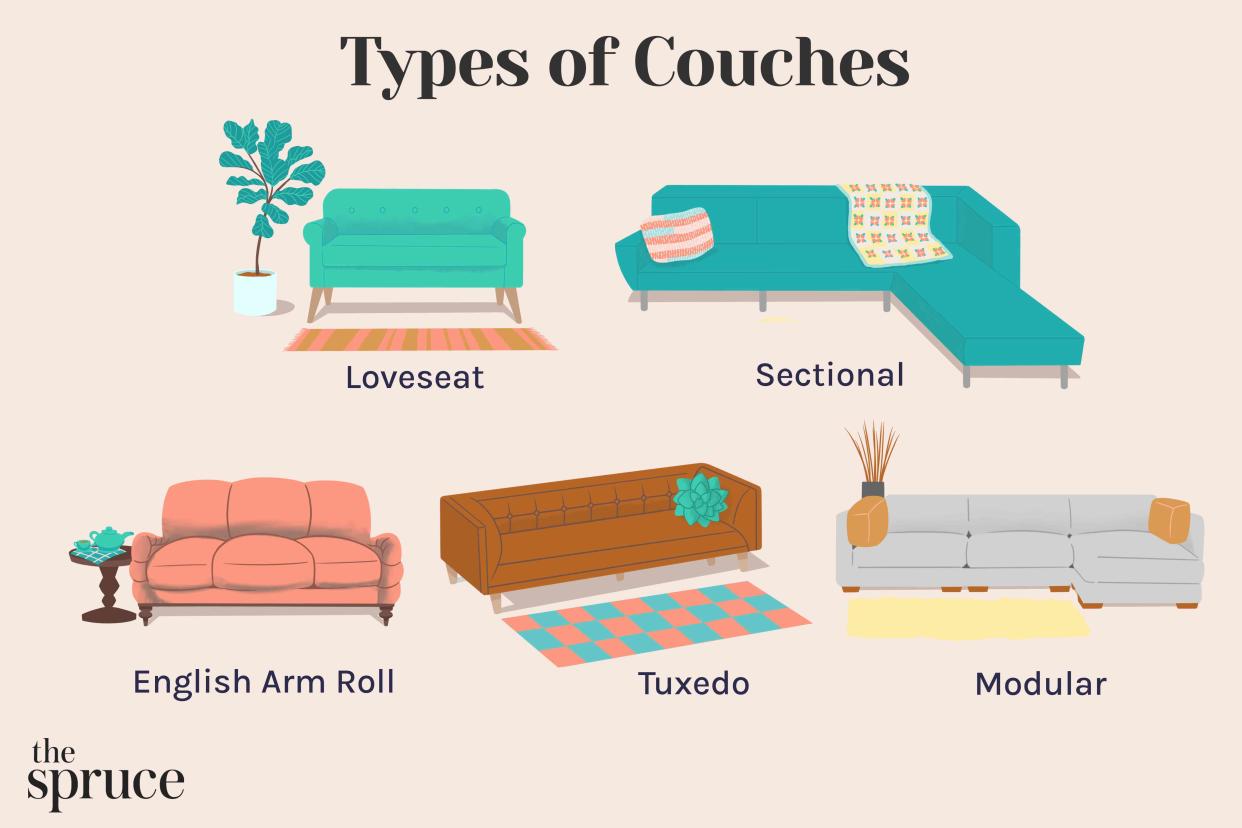
The Spruce / Ellen Lindner
Fact checked by Sarah Scott
When selecting a couch for your space, there are options to choose from. Experts advise first considering general limitations before focusing on a specific style. "The size is the first and biggest limiting factor," designer Tara Miller explains.
Size
When examining size, you'll also want to keep in mind scale. "Scale is the most important consideration because you want your new furniture piece to feel right at home and not be oversized or undersized," Miller notes. "If you aren't working with a designer who draws a furniture plan for you, you can easily take blue painter tape and a tape measure and tape out different furniture sizes on your floor."
"Once you find the right size for your space, look at your room's style. Is it formal? Casual? Eclectic? All this information will inform you on the style you should look for to complement your existing furnishings."
Type
Consider the various types of couches on the market and determine the best fit for your needs, living style, and material preferences. "One should also think about where they fall on the sofa spectrum," designer Cathy Purple Cherry says. "At one end is a firm sofa, and at the other is a down sofa. This spectrum also translates into what the couch looks like when it is not in use.
A firm or tight sofa will spring back into its clean look. On the other hand, a down sofa will look more like a rumpled bed. There's no right or wrong answer—it's personality-driven as to who is okay with what." Picking a material based on your family's lifestyle is also paramount. "For example, if the client has children and pets, we will use a washable slipcover or a Crypton or protected fabric for better durability," Purple Cherry adds.
According to interior designer experts, here are the most popular couches and their merits.
Meet the Experts
Tara Miller, NCIDQ, IIDA, owner and interior designer at The Heartland Interior Design in Omaha, Nebraska.
Cathy Purple Cherry is a licensed professional architect, LEED Accredited Professional, and principal for Purple Cherry Architects in Annapolis, Maryland.
Loveseats
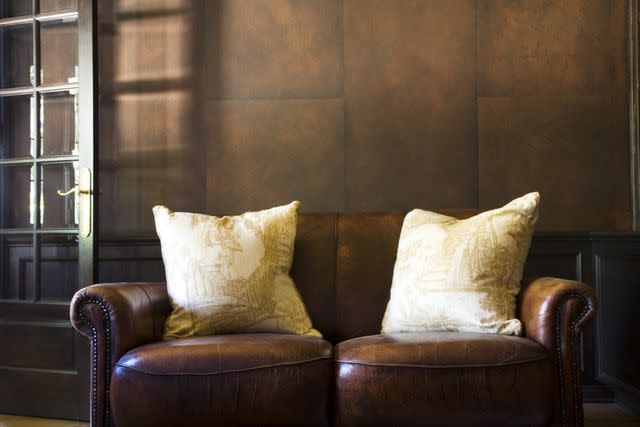
LOOK Photography / Getty Images
Best for: Small spaces and experimental accent seating
Designer Nina Grauer of Dekay and Tate Interiors calls the loveseat "the modern-day version of the settee." Loveseats are great for small spaces, such as studio apartments, and they can even function nicely in bedrooms, whether in a reading nook or at the end of a queen or king bed. Feel free to sit on a loveseat alone or share with another person, Grauer says. "Some loveseats are almost like oversized club chairs, whereas other loveseats can function more like mini sofas."
In addition to functioning well in small spaces, loveseats can make for wonderful additions to larger living rooms where a full-sized sofa is present, but there isn't necessarily room for two of such pieces, Grauer explains. "Loveseats can also be fun," she adds. "Feel free to experiment with different colors and textures in upholstery, even different styles than your main sofa, to add some interesting visual tension into your living room."
Sectionals
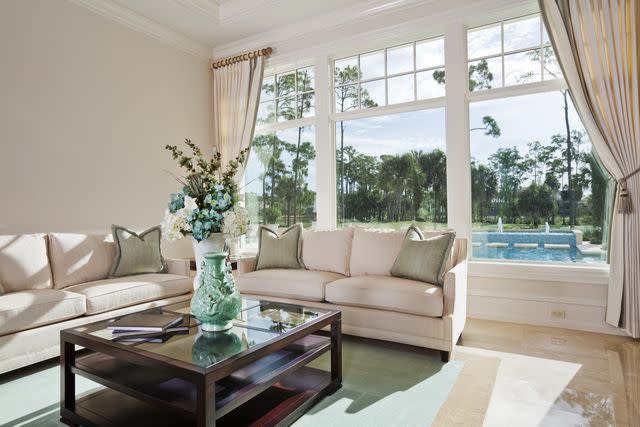
TerryJ / Getty Images
Best for: Lounging
"Sectionals have become so much more popular in recent years in large part as a response to the way we are living now," designer Georgia Zikas comments. "With the amount of time we spend at home, comfort and versatility is key—not to mention room to lounge."
She adds that sectionals can even serve as makeshift beds for guests—some offer pullout options. "These workhorse sofas truly deliver so much... and in this day and age, you can get gorgeously stylish sectionals that complement your overall design," Zikas says that when shopping for sectionals, prioritizing performance fabrics in neutral colors is always wise to ensure a piece is long-lasting and withstands wear.
English Roll Arms
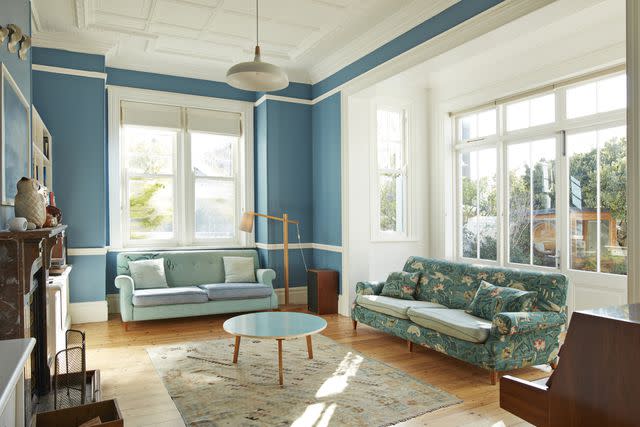
Klaus Vedfelt / Getty Images
Best for: Customizing to the look and style you want
This type of sofa is "perhaps one of the most classic and traditional styles of sofas you can own," designer Lacy Hughes of Julian Designs notes. But there's nothing wrong with a tried and true option, she notes.
"They are classic for a reason—they work in so many different living room arrangements, and nowadays, come in so many modern fabrications and styles that you cannot go wrong with this workhorse style couch!"
Tuxedo Couches
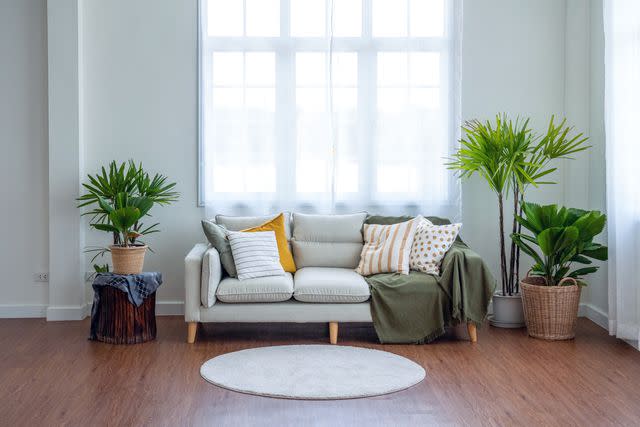
athima tongloom / Getty Images
Best for: Formal spaces
If you are feeling formal, this is the route to go. "Tuxedo couches tend to be a bit on the formal side, often upholstered in leather with tufting," designer Kristina Phillips says. Just be sure to plan for other furniture pieces accordingly. "The arms also are quite high, usually the same height as the back, something to consider when selecting side tables," Phillips explains.
Modular Couches
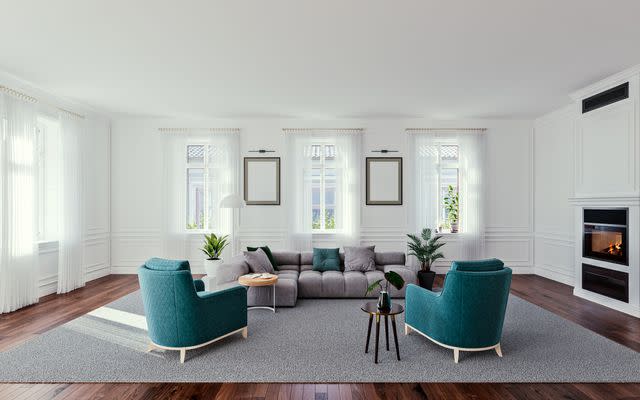
snorkulencija / Getty Images
Best for: Spaces requiring adaptability
Designer Leslie Murphy is seeing modular couches become increasingly popular. "It's exceptionally great for scaling out a living room, as it keeps functionality at the forefront and typically offers the most amount of seating," she says of the design.
"We also find that it allows you to flex your creative muscles to change up the layout." Plus, she adds that modular couches come with a lot of versatility should the purpose of a room shift. "There's also a lot of flexibility and longevity with modular sofas, particularly as your needs or family's needs change over time as it opens the floor to a more intimate living space."
Designer Bryan Yates also praises the modular couch. "Modular sofas give the client the ability to move things around as needed for entertaining or when they move," he explains. "We always make our selections based off of the proportion of the space, but using a modular provides longevity, which is so important when making such a big investment."
Chesterfield
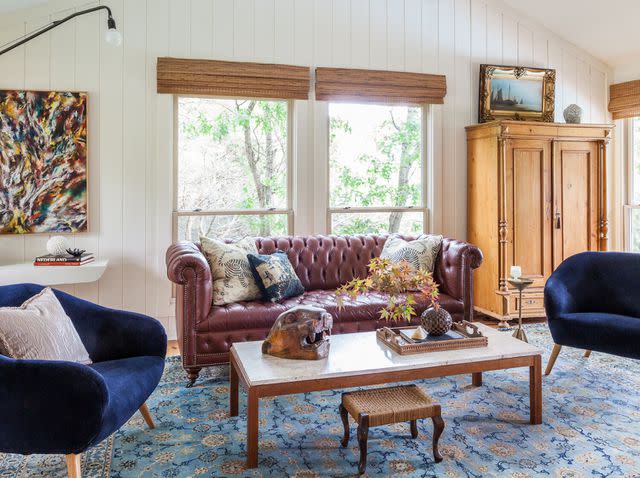
Best for: Wears leather well
Chesterfields are majestic and deep-button tufted marvels of couch couture. This British style came out of the mid-1700s and features rolled armrests.
These couches were traditionally made of leather, although they look great in many other fabrics. When designed with leather, nailhead trim is a popular choice. It can also look good in many sizes, from shorter sizes, like 70 to over 100 inches.
Lawson
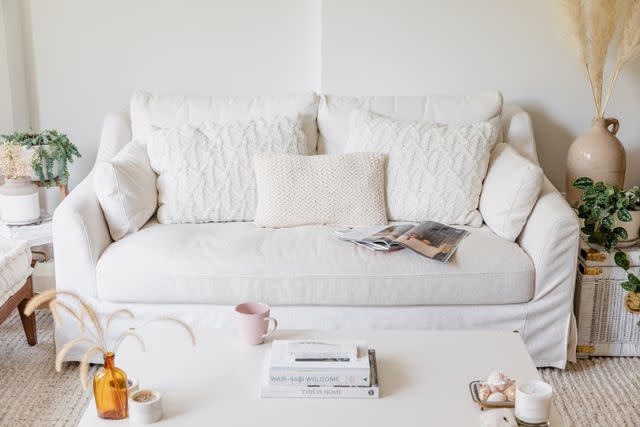
The Spruce / Leticia Almeida
Best for: Versatility, mainly works well with contemporary, modern, and mid-century modern styles
Lawson couches were custom-made to meet the needs of business tycoon Thomas Lawson at the start of the 20th century. These couches feature deep seats, overstuffed, removable cushions, and an angled back to support good posture. The armrests are lower than the back with a thin or traditional rolled arm but never a pillowed or overstuffed arm.
It is customarily a larger-sized sofa from 88 to 96 inches and can come as a sleeper sofa style. These sofas can suit the needs of large families or accommodate a taller person who wants to lay out for a nap.
Cabriole
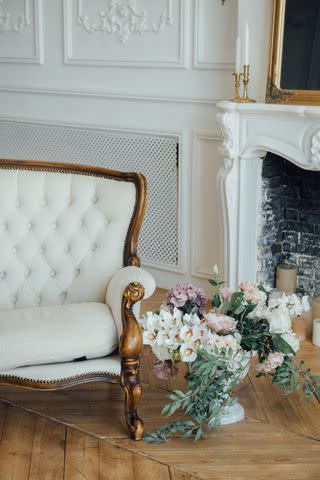
Best for: Elegant style for elevating a room's design aesthetic
The 1800s Victorian-style cabriole sofa is known for its signature curved wooden exposed legs, armrests, and ornate wooden frame back, popular in Queen Anne, Louis XV, and Chippendale periods. This sofa is a smaller style, usually a two-seater, although it can go up to a three-seater at about 84 inches.
Cabriole sofas are the pinnacle of French style, fitting well in a French provincial or country-style home, a traditional American home, or an eclectic retro aesthetic. It is usually a formal choice, not comfortable for napping or casual lounging.
Camelback
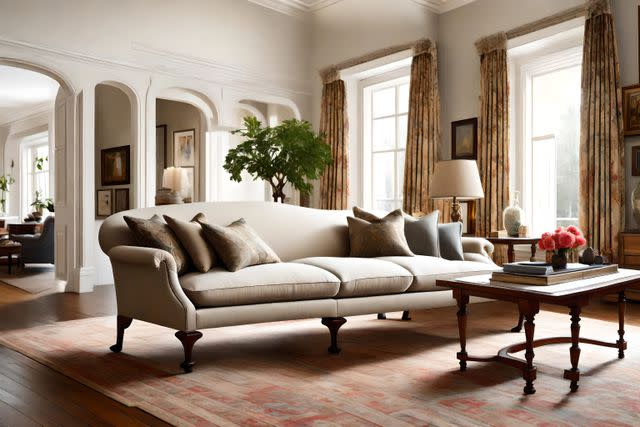
Imtisal / Adobe Stock
Best for: Accommodating more people
A camelback resembles a cabriole couch, usually with an exposed wooden frame and arching back. The arched back rises to a higher point in the middle and again slightly at the ends. Like its camel namesake, it comes with one or two humps.
The first camelbacks were created in the early 20th century. However, famous architect Frank Lloyd Wright designed several varieties of this couch in the 1940s and 1950s, popularizing these couches. This couch can come in armless styles, giving it more seating space.
Recamier
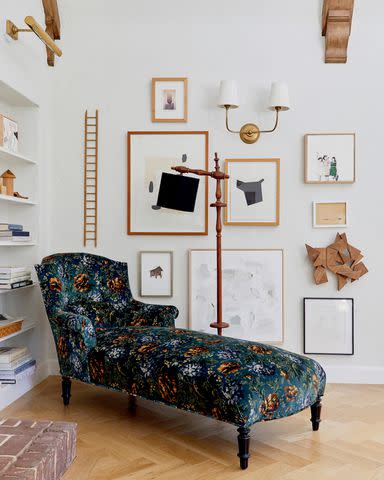
Emily Henderson Design / Photo by Sara Ligorria-Tramp
Best for: Reclining and entertaining in style
Like the cabriole, the recaimer is a historic sofa style, made famous from an 1800 painting by Jacques-Louis David of Madame Recamier reclining on this backless couch.
It looks like a backless daybed or extended chaise lounge with two scrolled ends for armrests or a backrest on each side. Like other historic-styled furniture, it looks best in formal rooms or rooms for entertaining as a statement piece meant to impress. It exudes elegance and luxury, giving airs of the lifestyles of the rich and famous.
The drawback with this couch is that it is not a versatile style that can fit many design styles. It looks most at home in a period-styled room or in a formal bedroom as seating in front of a window or at the foot of a bed.
Deep-Seated Couch
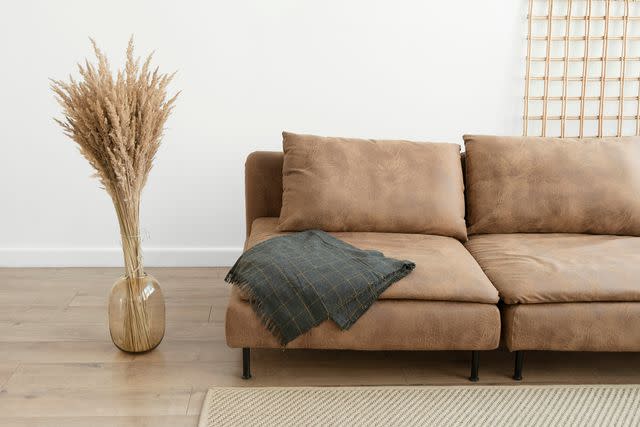
Katsia Jazwinska / Unsplash
Best for: Ultimate comfort, especially for taller people
Deep-seated couches are the best option for snuggling or getting cozy. An average couch seat is 28 to 32 inches, while a deep-seated couch has a seat depth of over 34 inches.
Deep-seated couches are the ultimate spot for cuddling up to watch a movie with the family. This comfy couch is one of the best choices for people with long legs.
Sleeper Sofa
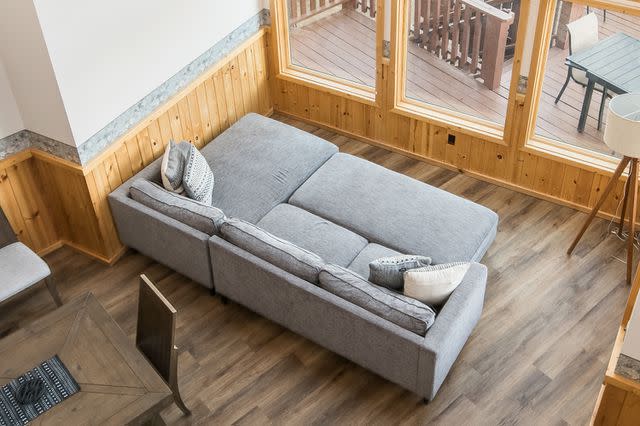
The Spruce / Alyssa Vela
Best for: Occasional overnight guests and multipurpose rooms
If you expect to host an occasional overnight guest here or there, a sleeper sofa is a couch that can be converted into a bed. Many sleeper sofas have a foldable bed frame hidden underneath the couch cushions.
This space-saving solution works best for rooms with multiple uses, like a den or office that doubles as a guest room. The downside is these pull-out mattresses are not a comfortable, long-term sleeping option.
Modern sleeper sofas are much sleeker than their heavy predecessors. These couches used to be heavy, hulking furniture with steel pull-out frames, but modern designs offer a lighter. foam fold-out sleeping surface.
Divan or Daybed
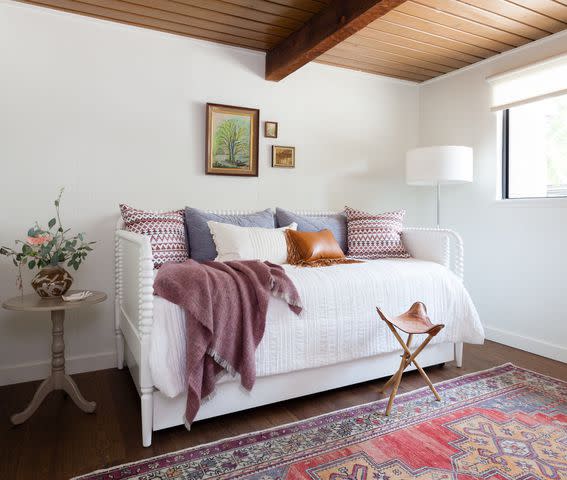
Best for: Space-saving, multiple-use rooms
A divan is a type of daybed with roots from the Middle East. This type of seating dates back to the 1800s, when it gained popularity in Europe. In Persia and Turkey, it was a mattress, usually against a wall, framed with pillows. The modern divan is essentially a couch without a back or an open-ended couch.
They have been described as a hybrid between a chaise longue, a couch, and a bed. This is an ideal space-saving seat by day, and at night, it doubles as a bed. For a good mental picture reference, the lounging couch that psychoanalyst Dr. Sigmund Freud used for his patients was a divan.
Recliner
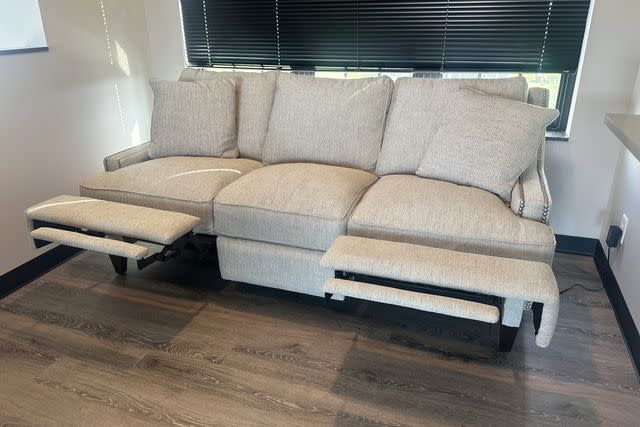
The Spruce / Gabrielle Gerke
Best for: Movie night, watching sports, or other group hangouts
Recliner sofas are mainly used for comfort and function over style, although these oversized furniture pieces have grown more stylish with time. Recliners began gaining popularity in the 1930s when the La-Z-Boy company mass-produced them. Companies in Japan started to mechanize them in the 1950s, and TV sitcoms featured them in the 1970s with their side-arm lever to raise and lower the back or footrest.
Many modern recliners are electronic and use remote controls to convert the seat. You can find recliners in all sizes and in leather or performance fabrics, depending on your needs.
Futon
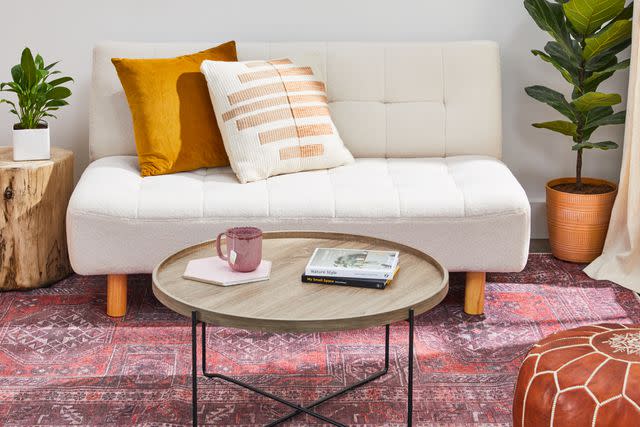
The Spruce / Jason Donnelly
Best for: Space-saving sleeping option if you're on a budget
Like daybeds or sleeper sofas, futons can double as a suitable sleeping spot. The mattress can lay flat at night and fold into an L-shape sofa during the day. A significant advantage of a futon is that it is usually easy to move around and restyle with new covers or replace the mattress.
Originally introduced to the United States by the Japanese, futons gained popularity in the 1970s. They have a reputation as being an affordable daybed option for college dorm rooms. However, modern futon styles are beautiful, with luxe overstuffed mattresses and solid walnut, cherry, oak, and maple construction.
Choosing a Couch
It's no secret that purchasing a couch is a significant investment. "The phrase 'You get what you pay for' isn't always true when it comes to sofa shopping," designer Jennifer Stoner notes.
"You need to know what you're looking for or work with a professional you trust who knows how to determine whether the quality matches the price point," Stoner adds that factors to keep top of mind include where the sofa was made and how it was constructed.
Read Next: The 19 Best Places to Buy a Couch of 2024, Tested and Reviewed
Read the original article on The Spruce.

